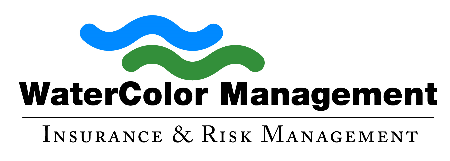
There is conflict in the water industry, and much of it has to do with a recent advisory that officials instituted. When working with your clients on their operations, you need to understand the industry’s threats to provide sound advice on the proper insurance protections. Recently, the Environmental Protection Agency issued several water health advisories.
Water Industry Conflicts
Every water treatment program should address the liabilities of water treatment companies. Also, the more people uncover new health concerns, the more there might need to be a policy change.
Recent Water Industry Advisory Announcements
In June 2022, the EPA announced four substances deemed harmful to human health. Then, they advised water treatment companies and public health offices to take action. Health advisories are not regulations but information considered important enough for public knowledge. These announcements help state, and local governments determine if a course of action is needed to safeguard public health. The EPA documents the health effects of particular contaminants or substances in each advisory. Next, they issue methodologies and treatment technologies available to address them.
The latest health advisories include the following four chemicals and the acceptable limits:
- Perfluorooctanoic Acid (PFOA): 0.004 ppt (or four parts per quadrillion)
- Perfluorobutane sulfonic acid and related compound potassium perfluorobutane sulfonate (PFBS): 10 ppt
- Perflourooctane sulfonic acid (PFOS): 0.02 ppt
- Hexaflouropropylene oxide, dimer acid, and ammonium salt (more commonly known as GenX or HFPO): 2,000 ppt
This information is released in light of new science and includes lifetime exposure. The EPA has determined that the levels are too low to detect.
Confliction Over the Water Industry Advisory
While the release of advisory information is crucial to public health, there are many concerns in the industry over the standards used for evaluating chemical levels and determining dangerous chemicals. The chemicals in question are sometimes called “forever chemicals” because these substances don’t break down over time. These chemicals contain water and grease-resistant properties like firefighting foam, food packaging, waterproof clothing, and nonstick cookware.
The new advisories are decreasing the 2016 guideline of acceptable parts per trillion from 70 down to 0.02 ppt and 0.004 ppt. Given the significant level of change, there is cause for alarm among those in the water treatment industry. The American Water Works Association recognizes the guidance of the advisories but questions the legitimacy of the measurement standards given the lack of sophisticated equipment to detect such small contaminants.
Additionally, the Water Environment Federation had similar concerns. While reminding those working with a water treatment program or facility or those in public health roles that advisories are not enforceable regulations, a statement was released that covered the financial and operational toll it would take to reduce this contamination from a water treatment perspective.
Health advisories should be acknowledged and recognized for the value they offer. However, until they become a regulation, enforcing the requested changes becomes difficult.
About Watercolor Management
Watercolor Management has insured the water industry for over 30 years. Our policies include unlimited defense cost coverage in the event of a lawsuit against you. Call us at (855) 929-0824 or email info@watercolormanagement.com for a quick quote for your Water Business Professional, Products/Completed operations, Pollution, and General Liability Insurance.




